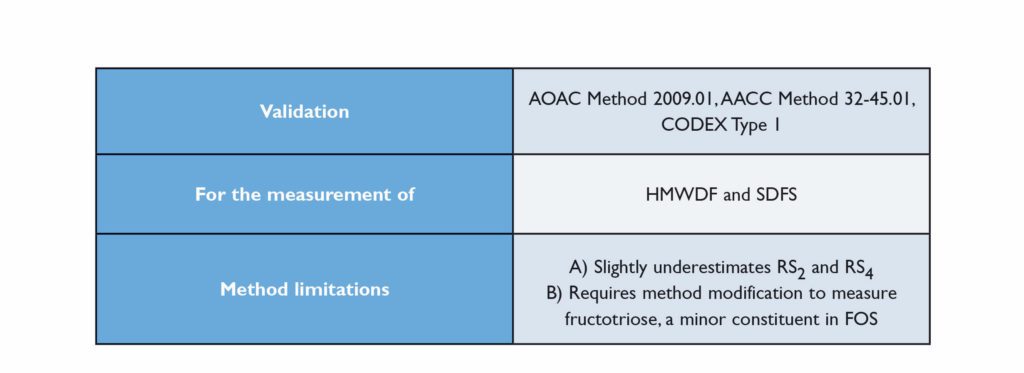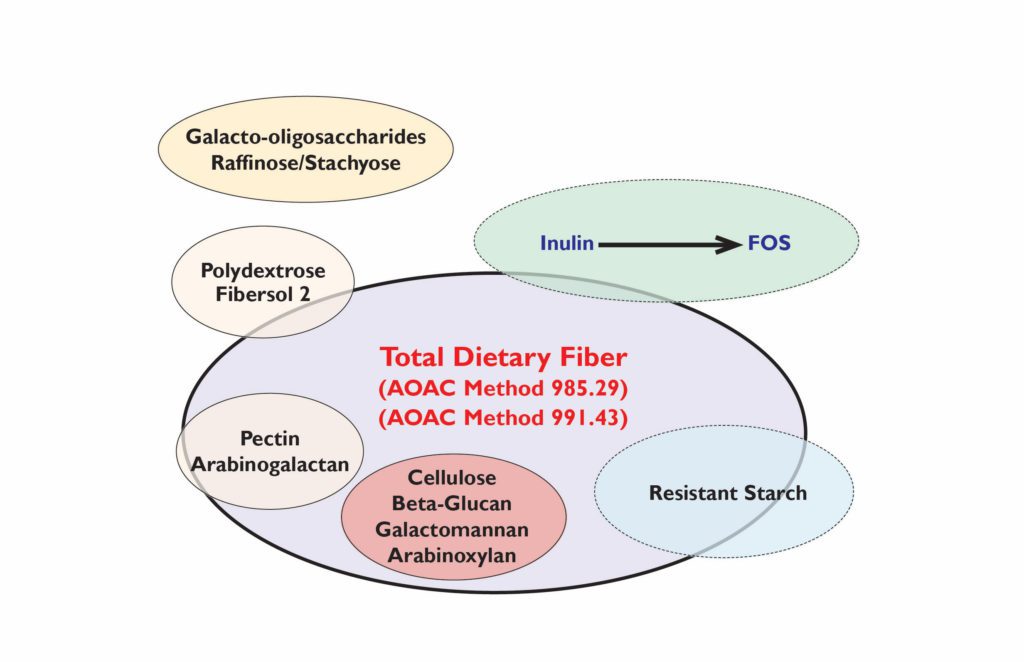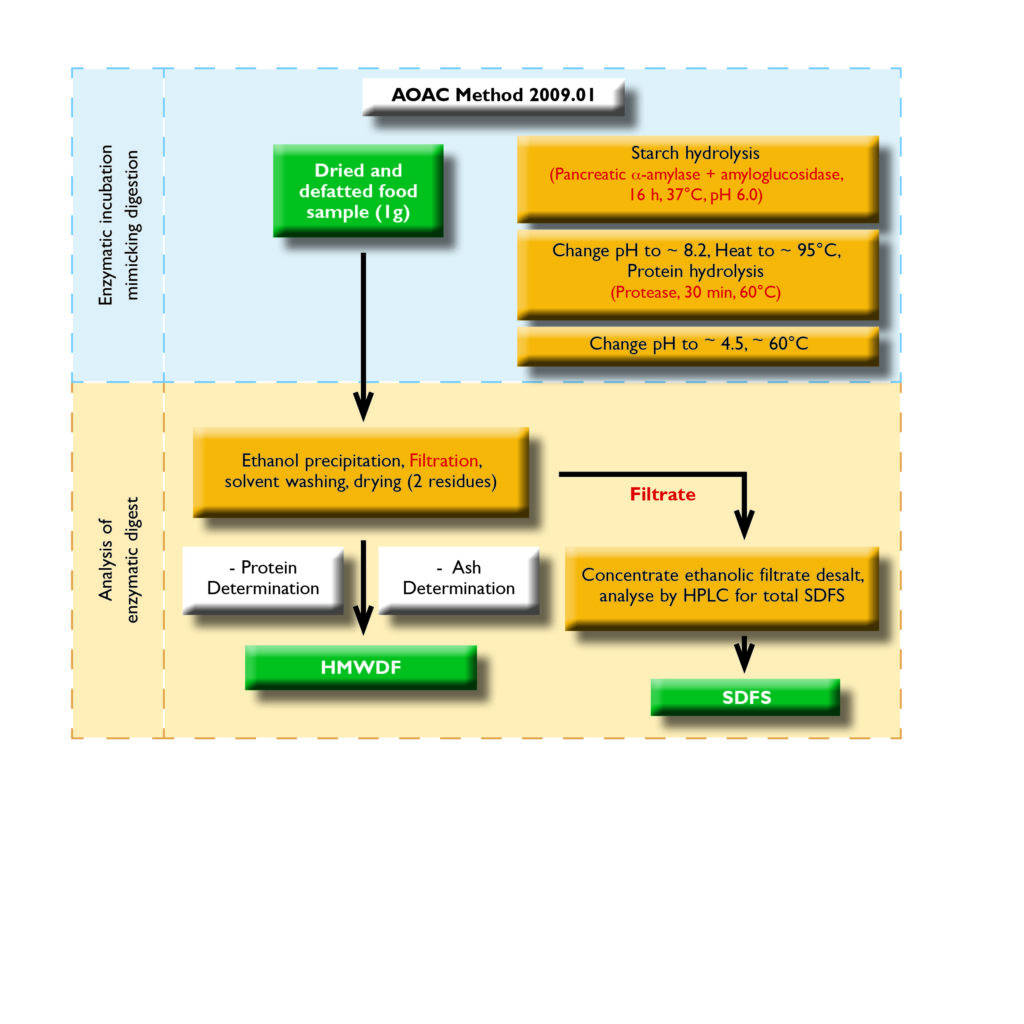Dietary Fibre Analysis / The McCleary Method
(HMWDF +SDFS)
Dietary Fibre Analysis
CODEX Alimentarius, the international body that provides guidance to national governments on food analysis standards, published their definition of dietary fiber in 2009 (page 2). Existing methods at that time (eg. Prosky, Lee and Matsutani) could not be used to measure all components of dietary fiber under the new definition.
In fact, it was found that some of the new components (eg. resistant starch) were partially measured under the existing methods but this led to overestimation of total dietary fiber when a method used for quantification of a single component (eg. AOAC 2002.02; resistant starch) was added to the value for dietary fiber obtained using Prosky, Lee or Matsutani methods – a phenomenon known as “double counting”.
Diagram showing dietary fiber components measured and not measured by AOAC methods 985.29 (Prosky) and 991.43
The requirement for a new integrated method that correctly determined total dietary fiber content as defined by CODEX Alimentarius in foods and beverages containing a wide array of diverse components was met by Prof. Barry McCleary at Megazyme.
The new integrated McCleary method received AOAC accreditation along with designation as a Type 1 CODEX method in 2009. The enzymatic incubation conditions were overhauled completely in order to more closely replicate digestion in the human small intestine by correlating the in vitro method results with in vivo data obtained from ileostomy patients. Starch degradation using porcine pancreatic 〈-amylase (as opposed to bacterial) and amyloglucosidase was performed at 37ºC. This prevents starch gelatinisation which preserves the resistant starch content in the sample thereby allowing it to be accurately measured. Furthermore, the 78% ethanol filtrate is analysed by HPLC and total SDFS content can be determined.
The details of the method are outlined below in full:


